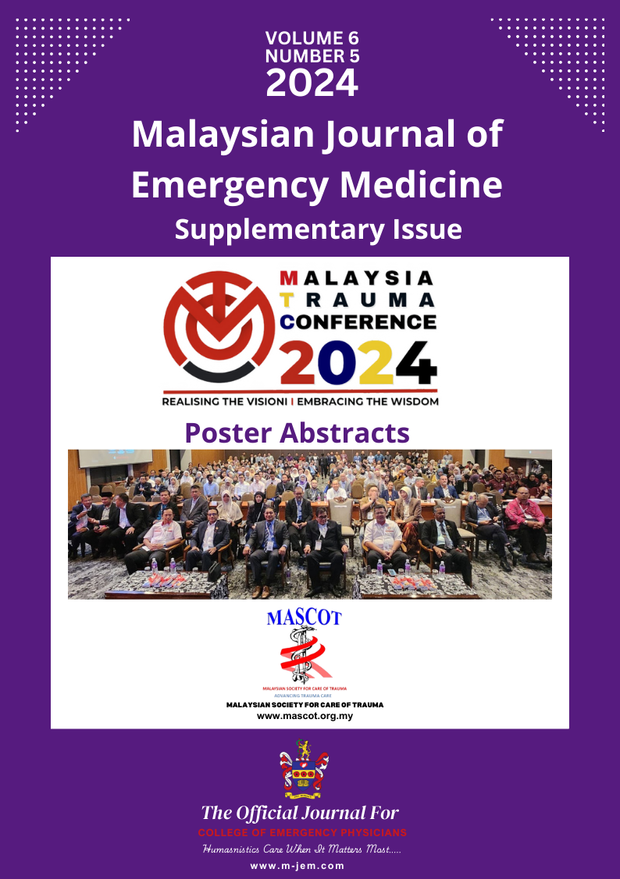A01 SCIWORA (Spinal Cord Injury Without Radiological Abnormality)
Main Article Content
Abstract
INTRODUCTION
Spinal Cord Injury Without Radiographic Abnormality (SCIWORA) is characterized by a clinical presentation of traumatic neurological deficits without corresponding pathological findings on X-ray or CT scans. This condition is most commonly observed in pediatric populations.
CASE DESCRIPTION
A 14-year-old male motorbike rider, who was wearing an improperly secured helmet during a collision with another bike, experienced a brief loss of consciousness and retrograde amnesia. Despite these symptoms, his Glasgow Coma Scale (GCS) score remained full. Subsequently, the patient developed paraplegia with paresthesia in both lower extremities, in the absence of neurological, spinal, or hemorrhagic shock. Neurological examination revealed symmetrical loss of sensation and motor power in both lower limbs, starting from the L1 level, consistent with upper motor neuron lesion characteristics. A CT brain scan showed no evidence of intracranial hemorrhage. A thoracolumbar CT scan revealed right transverse process fractures at T4 and T7. However, an MRI of the entire spine demonstrated only interspinous soft tissue edema from C7 to T3, indicative of a hyperflexion sprain injury, without signs of spinal cord injury. Due to interspinous soft tissue edema and spinal bone fractures without spinal cord involvement, a multidisciplinary team, including spinal and neuromedical specialists, decided to manage the patient as a case of SCIWORA. The patient was treated conservatively with a high-dose dexamethasone regimen, resulting in significant neurological improvement, allowing discharge with a minimum motor power of 3/5.
DISCUSSION
SCIWORA typically results from hyperextension or hyperflexion injuries, which can temporarily occlude spinal arteries, leading to ischemic events. In this case, MRI findings confirmed that the patient suffered a spinal hyperflexion sprain injury, correlating with the observed clinical symptoms.
CONCLUSION
The administration of steroids was the optimal treatment in this case, as it effectively reduced traumatic inflammatory edema in the spinal soft tissues, improving spinal perfusion and facilitating recovery.
Metrics
Article Details

This work is licensed under a Creative Commons Attribution-NonCommercial 4.0 International License.

